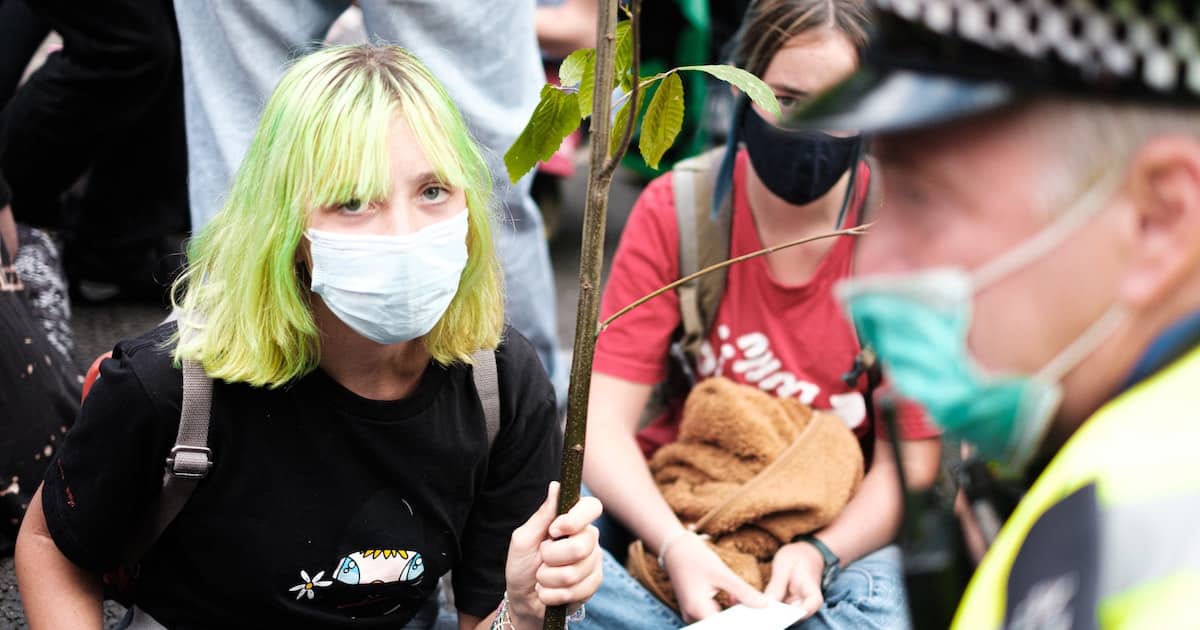By Jorge Rodriguez , Isabella Rolz
June 28, 2022

Greta Thunberg’s impact on environmental activism caught the attention of world leaders, including Donald Trump, back in 2018. Thunberg, who is known for her direct and unapologetic style, was 15 when she first stepped into the spotlight. Since then, she has had a heavy hand in shaping the next generation of climate activists, inspiring thousands of members of Generation Z, also known as zoomers, to join the climate movement.
“We can no longer let the people in power decide what is politically possible. We can no longer let the people in power decide what hope is. Hope is not passive. Hope is taking action. And hope always comes from the people,” said Thunberg at the Youth4Climate summit in Italy last year. Since 2018, the 19-year-old activist, alongside two million people in 2,000 cities around the world, has taken fate into her own hands, carrying out a series of global climate strikes called #FridaysForFuture to protest against the “passivity of politicians to curb climate change.” What makes these protests different? They are organized entirely online.
But Thunberg was not always so tech-savvy. When she first started campaigning, her style was somewhat “conventional,” said Klaus Hurrelmann, Professor of Public Health and Education at the Hertie School in Berlin, Germany. #FridaysForFuture marked the beginning of a new chapter in Thunberg’s career: She started using social media as a tool for mass communication and mobilization. “She is a master in using a hybrid communications technique by combining conventional methods with social media–something that other generations do not know how to combine,” said Hurrelmann.
Under Gen Z’s guidance, the climate movement has grown during the pandemic on the back of digital-first strategies from younger, bolder leaders, such as Uganda’s Vanessa Nakate, Colombia’s Francisco Vera, and Mexico-Chile’s Xiye Bastida.
Generation Z has made it clear that they are committed to playing an active role in how the climate issue is handled globally. Like Thunberg’s media exchanges with Vladimir Putin, Donald Trump, and other world political leaders, Nakate’s work with the United Nations and the impact Bastida had on President Joe Biden’s Summit on Climate last April are public displays of their generation’s commitment to a new brand of environmental activism.
Advocacy at a community level
According to a survey conducted by the Pew Research Center, zoomers and Millenials in the U.S. are talking much more about climate change than adults of other generations like the Baby Boomers. This is because “[in] Gen Z’s lifetime, and certainly the lifetime of their kids, will be severely affected by climate change,” said Bas Fransen, CEO of EcoMatcher. “Gen Z is aware of the potentially irreversible damage to the climate, so they become more vocal,” said Fransen.
Recent criticism issued by world political leaders against activists like Thunberg has shown that the best way to raise awareness may not be through global politics, but rather through community organization. “We cannot wait for people like me to grow up and be the ones in charge of everything; we have to act now,” Thunberg said in an interview in 2021.
This is where the greatest tool that Gen Z has at its disposal comes into play: social networks. “Because Gen Z is ‘digitally native,’ meaning they have always lived and interacted with a digitally social world, they are much better at utilizing and adapting to all of the possibilities and benefits online communication can offer,” said Jamie Belinne, Assistant Dean for the Career, and Industry Engagement at the C.T. Bauer College of Business of the University of Houston.
Through social media platforms, younger generations have established diverse social networks, often allowing them to develop more inclusive worldviews at a younger. “In part because of this, they can be more open to ideas related to change and social justice than generations whose youth was defined by a comparably homogenous peer group defined more by geography and ethnicity,” said Belinne.
Challenges to overcome
“We are living in a time where we do not consider ourselves the future because we are aware that we are the present. We, as young people, are fighting to unite all the people in the whole world,” said Hazel Araujo, a member of Semillas del Océano, a Guatemalan NGO dedicated to raising awareness of the oceans.
Although virtual environments are a great ally to the climate movements, Thunberg and others are acutely aware that all the knowledge gained there must be transformed into action. One of the great challenges activists face is knowing how to identify what kind of actions are required depending on where they live. The fight for climate justice will never be the same in Europe or North America, where the basic needs of the majority are covered, as it is in the Global South, where inequality and exclusion are still part of the fabric of society.
“In climate activism, most of the time, you only see young people from the first world, who face different challenges than those we face in developing countries,” said Araujo. Sexism, systematic violence against women, lack of education, and corruption, are among the most common problems in developing countries. They are rooted in the social and political culture of many Latin American, Asian, and African countries, and the lack of funds for rural and community development programs further aggravates the problem.
Learning to speak their language
“Language is constantly evolving, and the communication style of Gen Z is more indicative of future language trends,” said Belinne. She encourages older generations to be open to Gen Z and adapt to new communication styles and strategies for making an impact.
In the case of developing countries, for example, projects like EchoMatcher have found that inclusivity has played a crucial role in incorporating younger generations into their work. “We have had a youth ambassador since last year, a 13-year-old girl, whom we have given a global platform to speak and inspire,” said Fransen.